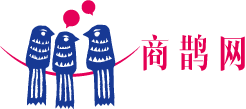Gojai Organic Brings Caffeinated Water To Alternative Beverage Category
戈贾伊有机公司将含咖啡因的水引入替代饮料领域
Imagine you’re a high-powered executive that needs a boost before a big meeting. Maybe coffee works for you, but what if you don’t like coffee? It’s not entirely appropriate to walk into the boardroom carrying a Red Bull or Monster Energy Drink. This is where Gojai Organic aims to fill a hole in the alternative beverage space.
想象一下,你是一个身负重任的高管,在即将召开的重要会议之前需要精神振奋一下。也许咖啡对你有用,但如果你不喜欢咖啡呢?带着红牛或怪兽能量饮料走进会议室是不太合适的。而戈贾伊有机品牌试图去填补替代饮品在市场的空缺。
Founded in California by CEO Lindsay Chambers, Gojai makes four caffeinated waters: Orange, Grapefruit, Raspberry Lime, and Lemon. Each contains 45 milligrams of caffeine, about half the amount of a cup of coffee. They’re aimed squarely at a demographic of drinker that prioritizes wellness and purpose-driven businesses.
由首席执行官林赛·钱伯斯在加利福尼亚州创立的Gojai公司生产四种含咖啡因的水:橙子味,葡萄柚味,树莓青柠味和柠檬味。每一种都含有45毫克的咖啡因,大约是一杯咖啡中咖啡因含量的一半。 这些产品直接瞄准的是注重健康和以生意为目标导向放在首位的饮酒人群。。
Does The Wine Industry Have A Racism Problem?
葡萄酒行业是否存在种族歧视问题?
Sun Noodle, The Force Behind The U.S. Ramen Boom, Now Offers Fresh Ramen Noodles Directly To Consumers
“太阳拉面”是美国拉面热潮的幕后推手,现在直接向消费者提供新鲜拉面面团
Utz Quality Foods Going Public With An Anticipated $1.56 Billion Enterprise Value Upon Merger With Collier Creek Holdings
Utz优质食品公司与科利尔溪控股公司计划合并上市,预计合并后企业价值将达到15.6亿美元
For the last decade, Lindsay Chambers worked as a real estate developer and interior designer in Northern and Southern California. She created homes, furnished them, and then sold them turnkey. She made a good living, selling over $100 million in homes, but eventually began to look for something “more purpose-driven.”
在过去的十年里,林赛·钱伯斯在加利福尼亚北部和南部从事房地产开发和室内设计的工作。她设计房屋,布置内部环境,然后将房屋整体出售。她生活得很好,售出了价值超过1亿美元的房子,但最终她开始寻找一些“更具有目标导向性”的工作。
“At that point, my mom was going through chemo at Stanford,” says Chambers. “She’d wanted to get off Diet Coke but she couldn’t kick the habit. I’d noticed that she was a sparkling water drinker. And I said, ‘Hey mom, what about a sparkling water with caffeine?’ And that was the beginning of Gojai.”
“那时,我妈妈正在斯坦福接受化疗,”钱伯斯说道。 “她想戒掉健怡可乐,但她就是戒不掉这个习惯。 我注意到她是个爱喝苏打水的人。 我说,‘嘿,妈妈,来杯含咖啡因的苏打水怎么样?’这就是Gojai这个品牌诞生了。“
Named for the California city from which Gojai derives its four core flavors (Ojai, California, is a big agricultural area), Gojai launched in retail on March 4th, 2020. The online launch occurred in February.
Gojai品牌名称源于其四种核心口味所源自加利福利亚州的一个城市加州(奥贾伊是加利福利亚州一个农业发达的地区),Gojai于2020年3月4日正式开始零售渠道上市,其线上销售在2月发布。
“As of March, we were in one state,” Chambers says. “Now we’re in thirty-eight.”
钱伯斯说:“截至三月份,我们只覆盖了一个州。现在我们已经覆盖了38个州。”
If the popularity of caffeinated water seems strange, it’s only because to most consumers, it’s still a foreign concept. And yet, most consumers are familiar with Monster Energy and Red Bull, two of Gojai’s competitors.
如果含有咖啡因的饮料如此流行似乎有些奇怪,那只是因为对于大多数消费者来说,这任然是一个陌生的概念。然而,大多数消费者对红牛或怪兽能量饮料这两个Gojai的竞争对手产品并不陌生。
“Energy drinks and sparkling water are the two biggest growth areas in the non-alcoholic beverage category,” says Chambers. “Natural energy drinks have the highest growth rates of all.”
钱伯斯说:“在非酒精饮料品类中,能量饮料和苏打水是两个增长最迅猛的领域。其中天然能量饮料的增长率是所有饮料中最高的。”
As consumers prioritize health and wellness, they’re demanding drinks with clean labels and clean ingredients. In the last few years, hard kombucha makers like Jiant, Yesfolk Tonics, and Flying Embers have all seen boosts in popularity, buoyed by a population interested in natural products. Hiball, a “sparkling energy seltzer,” has become a fixture food coops and Whole Foods.
随着消费者把健康与养生放在首位,他们要求饮料具备清晰的标签和纯净的成分。 在过去几年里,像简特,耶斯福克补剂,飞烬等这类硬式康普茶生产商的受欢迎程度有所提升,这得益于对天然产品感兴趣的消费者群体。 而希巴尔这种“气泡能量苏打水”,已经成为食品公司和全食超市的固常见产品。
For this reason, Chambers used organic green (unroasted) coffee as her source of caffeine. Additionally, she used her design background to create a beautiful, straightforward label which highlights the product’s simple ingredients.
因此,钱伯斯使用有机绿色(未烘焙)咖啡作为她所使用的咖啡因来源。 此外,她利用自己的设计背景,设计了一个美观、简洁的标签,突出了产品所含的简单成分。
“People want to understand what’s on the ingredient list,” says Chambers. “How much sugar is in it, how many ingredients.”
钱伯斯说:“人们想知道配料表上有什么,比如含有多少糖,有多少种成分。”
If Chambers’ hypothesis is correct, gone are the days when consumers want to see Niacinamide, Calcium Pantothenate, and Pyridoxine HCI (three ingredients in Red Bull) on the back of a can. The label of Gojai’s Grapefruit water reads more simply: carbonated water, organic natural flavors, organic lemon juice concentrate, and organic caffeine.
如果钱伯斯的假设是正确的,那么消费者不再会在饮料罐的背面看到烟酰胺、泛酸钙和盐酸吡哆醇(这些都是红牛中的三种成分)这样的字眼。Gojai的葡萄柚水的标签写得更简单:碳酸水,有机天然香料,有机柠檬汁浓缩液,有机咖啡因。
After testing over twenty caffeine sources, Chambers settled on green coffee because “raw green coffee at forty-five milligrams of caffeine gave me the same lift as synthetic caffeine at ninety milligrams.”
在对20多种咖啡因来源进行测试后,钱伯斯选择了生咖啡,因为“生咖啡中45毫克的咖啡因和90毫克合成的咖啡因所带来的提神效果是一样的。”
As an homage to the products origins, Chambers settled on forty-five milligrams — about half the amount of caffeine as a cup of coffee — because it’s the same amount of caffeine in a Diet Coke.
作为对产品起源的敬意,钱伯斯将咖啡因含量定为用45毫克--大约是一杯咖啡中咖啡因含量的一半--因为它与一杯健怡可乐中的咖啡因含量是一样的。
As the wellness trend continues, expect to see more creative entries in the alternative beverage space, especially those that focus on clean labels, transparent sourcing, and the stories behind the brand. “Purpose-driven” has also become a buzzword in the modern marketing playbook, with brands looking to connect their products with philanthropic social trends.
随着健康养生趋势的持续发展,我们可以期待在替代性饮料领域看到更多独具创意的产品,特别是那些注重清晰标签、透明采购渠道和品牌背后故事的产品。 “目标驱动”也已成为现代市场营销中的一个时髦词,各品牌正试图将他们的产品与慈善的社会趋势相联系。
In this respect, Gojai is no different — in April, Chambers donated all Gojai profits to feed frontline workers in Los Angeles. To help medical workers in areas particularly hard hit by coronavirus, she also gave 10,000 cans of Gojai product to hospitals in Southern California and another 10,000 cans to hospitals in New York City.
在这方面,Gojai在4月份的表现也并没有什么不同,钱伯斯将Gojai的全部盈利捐给了洛杉矶的一线工人。 为了帮助那些受新冠病毒影响尤为严重的地区的医务工作者,她还向南加州的医院捐赠了10,000罐Gojai产品,同时向纽约市的医院捐赠了另外10,000罐。



